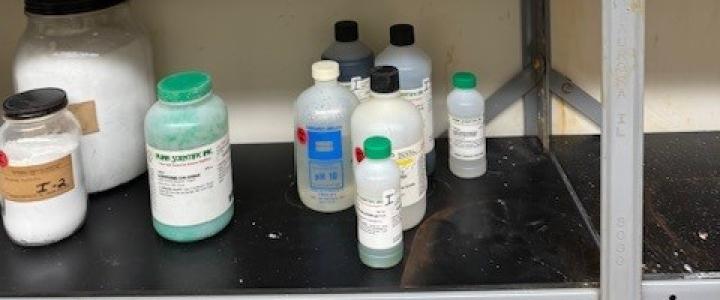
Pollution Prevention Program helps schools manage chemicals and other waste
During December and January, NHDES’ Pollution Prevention (P2) Program visited five schools to provide free, confidential guidance to school administrators and staff on common questions regarding proper chemical storage, managing hazardous and universal wastes (for example, mercury-containing fluorescent bulbs and old thermostats), how to dispose of unwanted chemicals, and energy and water conservation strategies.
There are many areas within a school building where hazardous chemicals can be found, such as art rooms, science rooms and laboratories, wood and metal shops, automotive repair and autobody shops, photography rooms, graphic arts and printing rooms, and even the custodial department (cleaners and pesticides). During our visits the most common issues found were associated with vapes collected from students, which contain nicotine (a hazardous waste), old chemicals and incompatible chemicals stored next to each other, which is a health and safety risk.
After the visits, the P2 Program provided site visit reports including information about what was observed and how to remedy any issues found and links to guidance documents and other resources to help schools protect teacher and student health and the environment.




